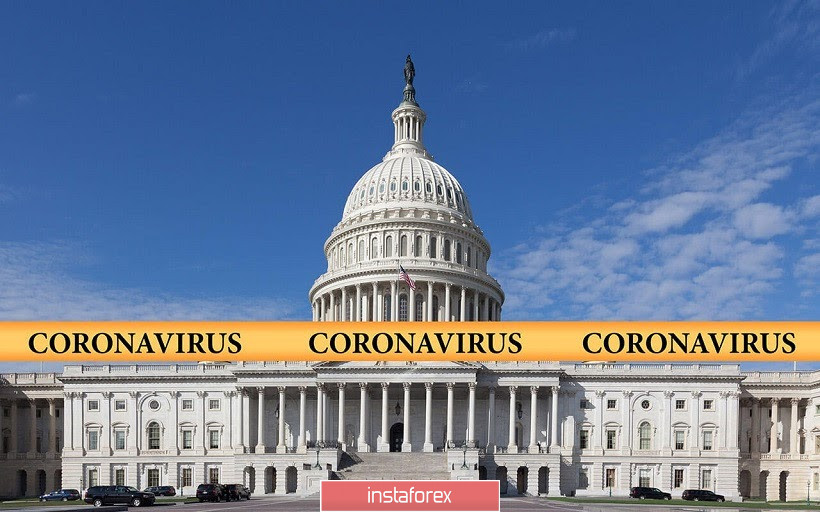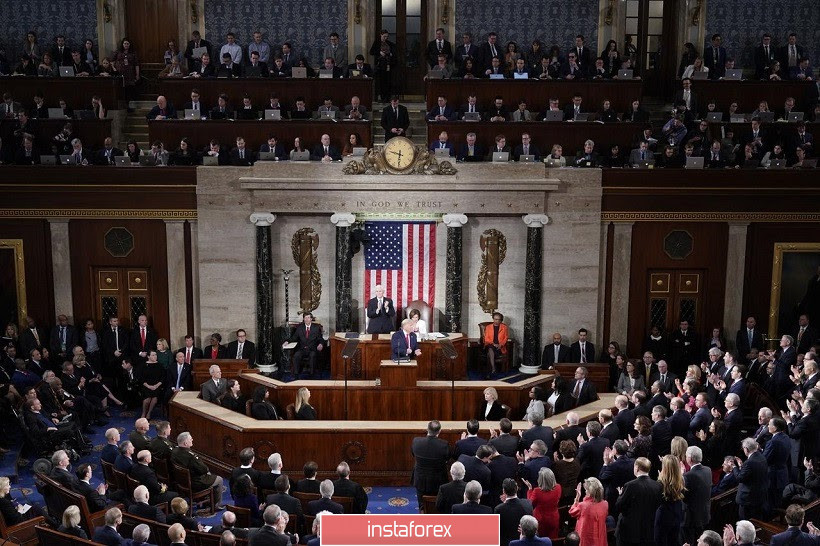The dollar is showing its weakness and vulnerability again. Uncertain attempts at correction end in failure – and we saw a similar failure during the Asian session on Wednesday. After a corrective growth to the 93.780 level, the dollar index turned around and actively began to fall to the bottom of the 93rd figure.
Let me remind you that the market reacted to reports of local outbreaks of coronavirus in European countries at the beginning of the week. Against this background, the US currency was able to slightly recover due to a surge in anti-risk sentiment. But the greenback failed to keep its position: investors did not give in to panic, especially since the situation in the United States is much worse than in the rest of the world, despite the optimistic assessments of US President Donald Trump. As a result, the dollar remained under the weight of its problems, and dollar bulls lost their positions in almost all currency pairs.

Such dynamics of the US currency is due to several factors, but they are all related to the topic of coronavirus. As mentioned above, Trump made a fairly resonant statement yesterday, the essence of which was that COVID-19 is finally receding. He cited comparative statistics regarding the last week and noted a positive trend. However, his words were criticized by many experts. According to them, it is too early to talk about any trends, especially if we compare the indicators of just a few weeks. For example, following a multi-day decline, the daily increase in the number of cases exceeded the 60,000 mark again. In addition, just the other day, the coordinator of the working group on coronavirus, Dr. Deborah Birx, announced the "extremely high level of spread" of the virus in rural areas of the United States and cities. According to her, COVID-19 is entering a new phase, and the situation may worsen in the fall, when seasonal flu is added to the coronavirus. Against the background of this position of a specialized expert, Trump's words look politically biased, given the upcoming presidential elections.
That is why Trump's rhetoric has provided short-term support to the dollar. Simply put, Trump was "not believed": it is not the first time that he has voiced very contradictory statements regarding the COVID-19 epidemic (regarding the dynamics and prospects of spread), so his position in this case is optional. While the latest medical reports refute the president's optimism.
Political battles that unfolded in the US Congress also exert additional pressure on the dollar. Let me remind you that the US has stopped paying 600-dollar additional payments to the unemployed Americans since July 31, that is, since last Friday. Despite long negotiations, the parties were unable to agree on their future fate: the Democrats insist on extending these payments until at least the end of this year, while the White House and most Republicans want to first reduce their amount to $200 a week, and then set the amount of assistance at 70 percent of the salary that the employee received before being dismissed as a result of the pandemic. And this is not the only stumbling block. Another round of incentive payments, assistance to tenants in preventing evictions, and assistance to the US Postal Service is also at stake.
The discussion of a new package of economic assistance is in its second week. The parties try to remain optimistic, claiming "some progress in reaching an agreement", but de facto "who is still there". Democrats and Republicans can't find a common denominator regarding the amount of additional aid. If the Democrats propose to spend $3 trillion 400 billion for this purpose, the Republicans want to limit themselves to one trillion dollars.
Negotiations are difficult and, one might say, "unhurried". Yesterday, the democratic leader in the Senate, Chuck Schumer, said that the parties "found some understanding" on six issues, but it is too early to talk about any compromise solution. A similar position was expressed by the speaker of the House of Representatives, also a representative of the Democratic party, Nancy Pelosi. According to her, the bill will not be approved until next week.

Republicans have proposed a so-called "short-term bill" that would extend the payment of unemployment benefits by a week, thus giving the negotiators more time. But the Democrats did not support this idea, stating the need for a holistic law. Therefore, Democrats made it clear that they would continue to take a tough position in the negotiation process, imposing their terms.
The uncertainty in this matter, as well as the daily increase in the number of coronavirus cases in the United States, put significant pressure on the greenback. The dollar index came close to the borders of the 92nd figure, reflecting the general pessimism regarding the US currency. If Democrats and Republicans do not come to an agreement by the end of the week (which is very likely), the greenback will continue to lose ground, especially if COVID-19 in the United States shows an upward trend.
Speaking directly about the euro-dollar pair, the EUR/USD buyers won the battle and were able to return to the 18th figure. The pair is located between the middle and upper lines of the Bollinger Bands indicator on the daily and 4-hour charts, as well as above all the lines of the Ichimoku indicator and the Kumo cloud. That is, the technical picture indicates the potential for further growth. The target of the upward movement is 1.1870 - this is the upper line of the Bollinger Bands on H4. The main resistance level is the psychologically important 1.1900 level.





















